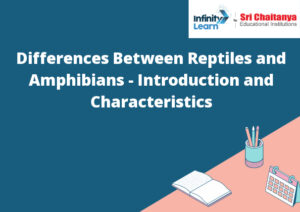Table of Contents
Differences Between Reptiles and Amphibians
Reptiles and amphibians are both animals that live in water and on land, but they have some key differences. Reptiles are cold-blooded, meaning they rely on their environment to regulate their body temperature. Amphibians, on the other hand, are warm-blooded and can generate their own heat. Reptiles have scales on their skin, while amphibians have smooth skin. Amphibians can breathe through their skin, while reptiles need to breathe through their lungs. Reptiles lay eggs, while amphibians give birth to live young.
Reptiles and amphibians are both animals that live in water and on land, but there are some major differences between them. Reptiles are ectothermic, meaning they get their energy from the environment, while amphibians are endothermic, meaning they generate their own heat. Reptiles have scales on their skin that help them stay dry and protect them from predators, while amphibians have smooth skin that allows them to move more easily in water. Reptiles lay eggs that hatch into baby reptiles, while amphibians lay eggs that hatch into baby amphibians. Reptiles are generally slower and more sedentary than amphibians, and they have longer lifespans.

What are Reptiles?
Reptiles are a class of animals that are typically characterized by their scales, their lack of hair, and their ability to lay eggs. They are cold blooded, which means that their internal body temperature is regulated by their environment. This class includes snakes, lizards, turtles, and alligators.
Characteristics of Reptiles
Reptiles are ectothermic, meaning their body temperature is regulated by the external environment. This makes them very versatile in their environment, as they can live in a wide range of habitats. They are also heterotrophs, meaning they must eat other animals in order to survive. This makes them predators, and many have sharp claws or teeth to help them capture their prey. Reptiles have a tough, scaly skin that helps protect them from predators and the elements. They also have a four-chambered heart, which helps them stay active for long periods of time.
What are Amphibians?
Amphibians are a group of animals that includes frogs, toads, newts, and salamanders. Amphibians are ectothermic, which means they rely on their environment to regulate their body temperature. Amphibians are also tetrapods, which means they have four limbs.
Characteristics of Amphibians
Amphibians are cold-blooded vertebrates that typically have moist skin and live in water or in moist environments on land. They hatch from eggs that are laid in water and the young resemble miniature adults. Some species of amphibians can regenerate lost body parts, a characteristic that is especially evident in the tadpole stage of the life cycle.
Fun Facts on!
Reptiles and amphibians are two of the most diverse groups of animals on Earth. Reptiles are a class of animals that includes turtles, snakes, lizards, and alligators. Amphibians are a class of animals that includes frogs, toads, salamanders, and newts.
Reptiles and amphibians evolved from a common ancestor over 350 million years ago. Reptiles are ectothermic, which means they rely on the environment to regulate their body temperature. Amphibians are amphibious, which means they can live both on land and in water.
Reptiles and amphibians have some interesting features in common. They both have scales on their skin, which helps protect them from predators and parasites. They also both have a three-chamber heart, which allows them to move quickly between water and land.
Reptiles and amphibians have some unique features as well. Reptiles are the only class of animals that have dry skin. Amphibians are the only class of animals that can regenerate their limbs.
Reptiles and amphibians play an important role in the environment. Reptiles help control the population of prey species, and amphibians help control the population of insects.
Reptiles and amphibians are an important part of the food chain. They are preyed on by a variety of predators, including birds, mammals, and other reptiles.
Reptiles and amphibians are an important source of medical research. Some amphibians, such as the poison dart frog, contain toxins that can be used to develop new medicines.
Reptiles and amphibians are a vital part of our ecosystem. They are an important source of food, and they help control the populations of other animals. They are an important part of our environment, and we need to protect them.
Difference Between Amphibians and Reptiles
There are many differences between amphibians and reptiles. One major difference is that amphibians must live in water in order to breed, while most reptiles can mate and lay eggs on land. Amphibians generally have smooth, slimy skin, while reptiles have dry, scaly skin. Amphibians also usually have shorter lives than reptiles, and their eggs are typically deposited in water, while reptiles typically lay their eggs on land. Amphibians breathe through their skin and through their mouths, while reptiles breathe through their lungs. Finally, amphibians typically have four limbs, while reptiles typically have four legs and a tail.
Similarities Between Amphibians and Reptiles
Both amphibians and reptiles are vertebrates.
Both amphibians and reptiles are ectothermic.
Both amphibians and reptiles have scales.
Both amphibians and reptiles reproduce by laying eggs.
Both amphibians and reptiles have a four-chamber heart.
Both amphibians and reptiles have a two-stage life cycle.





